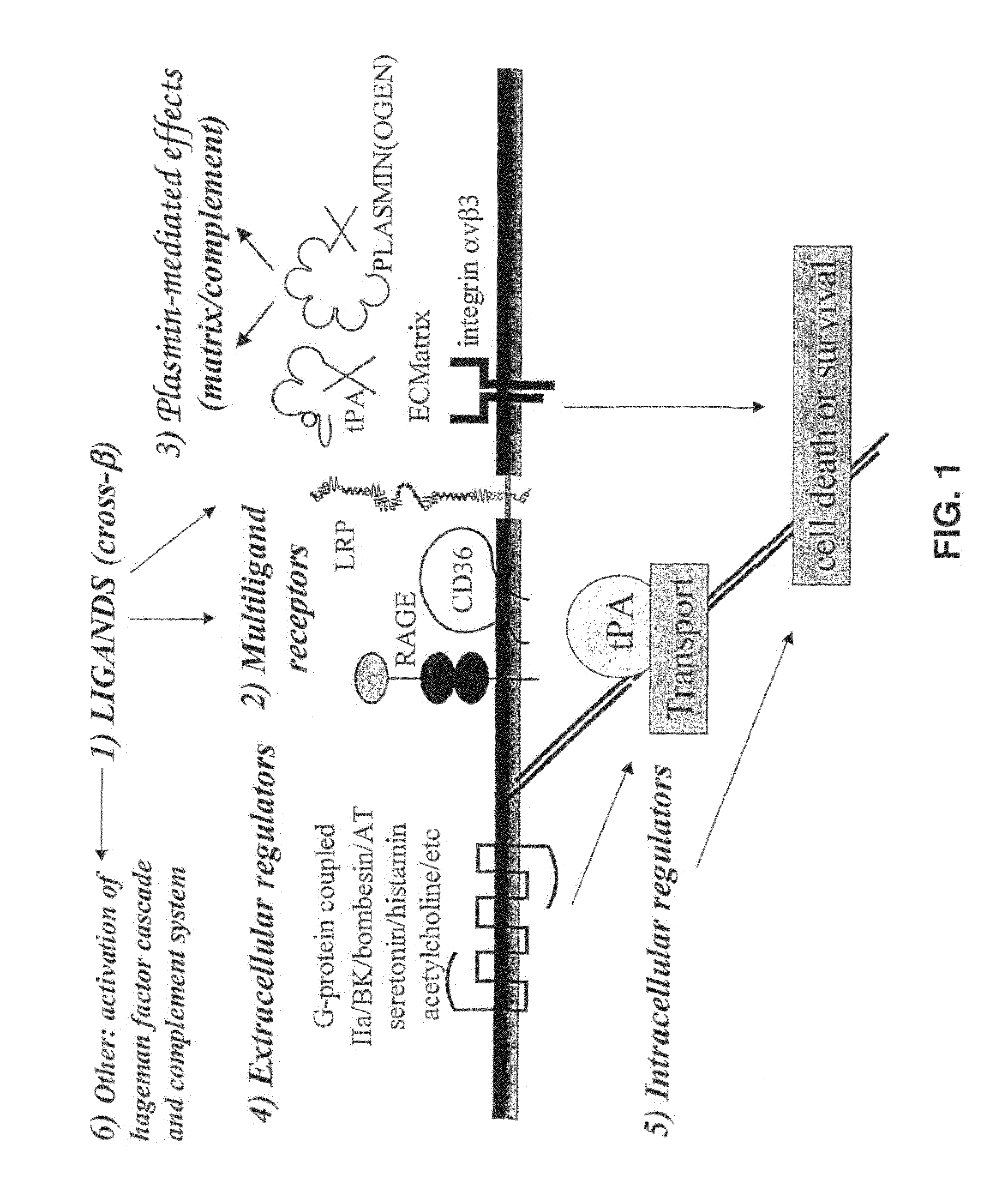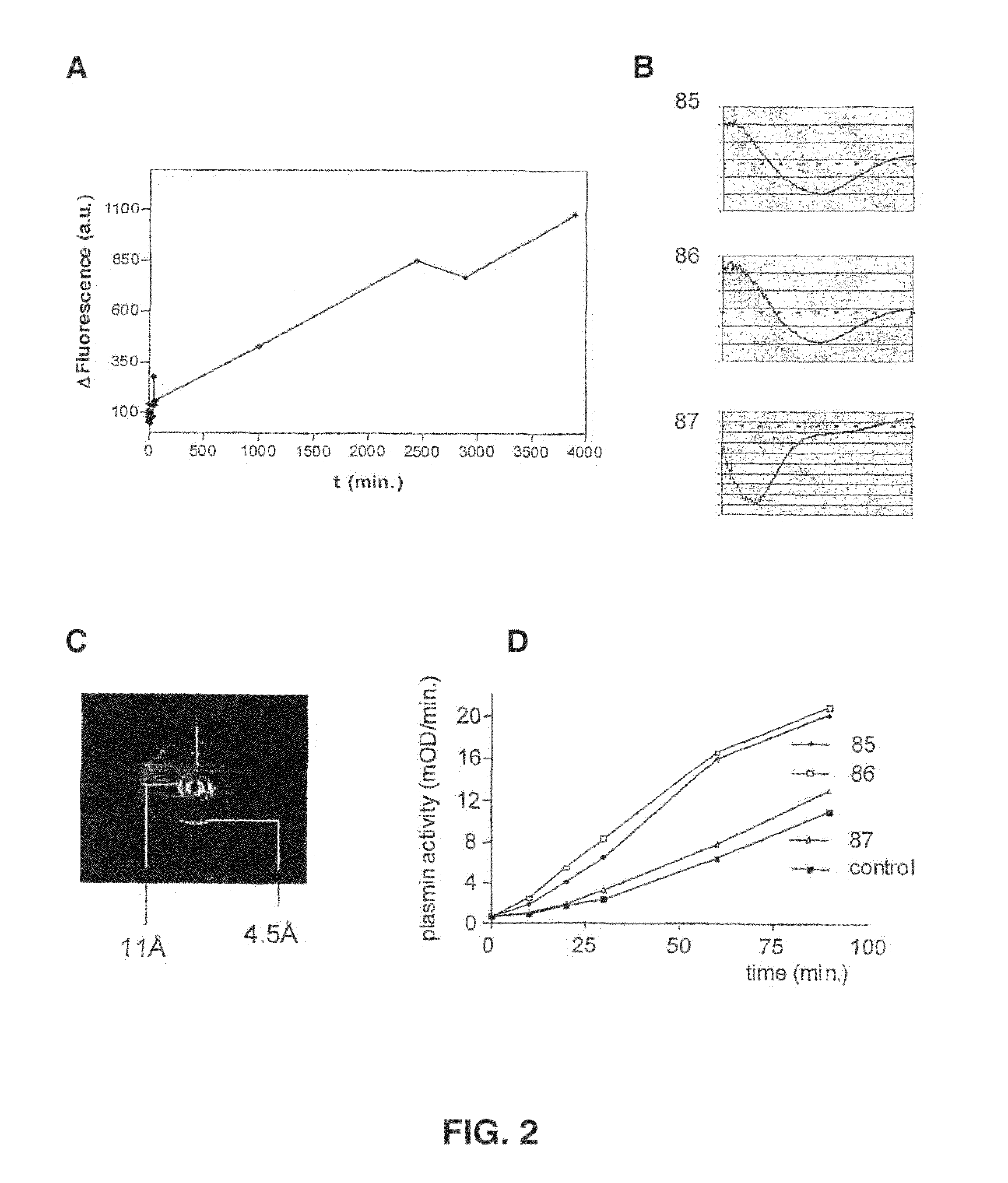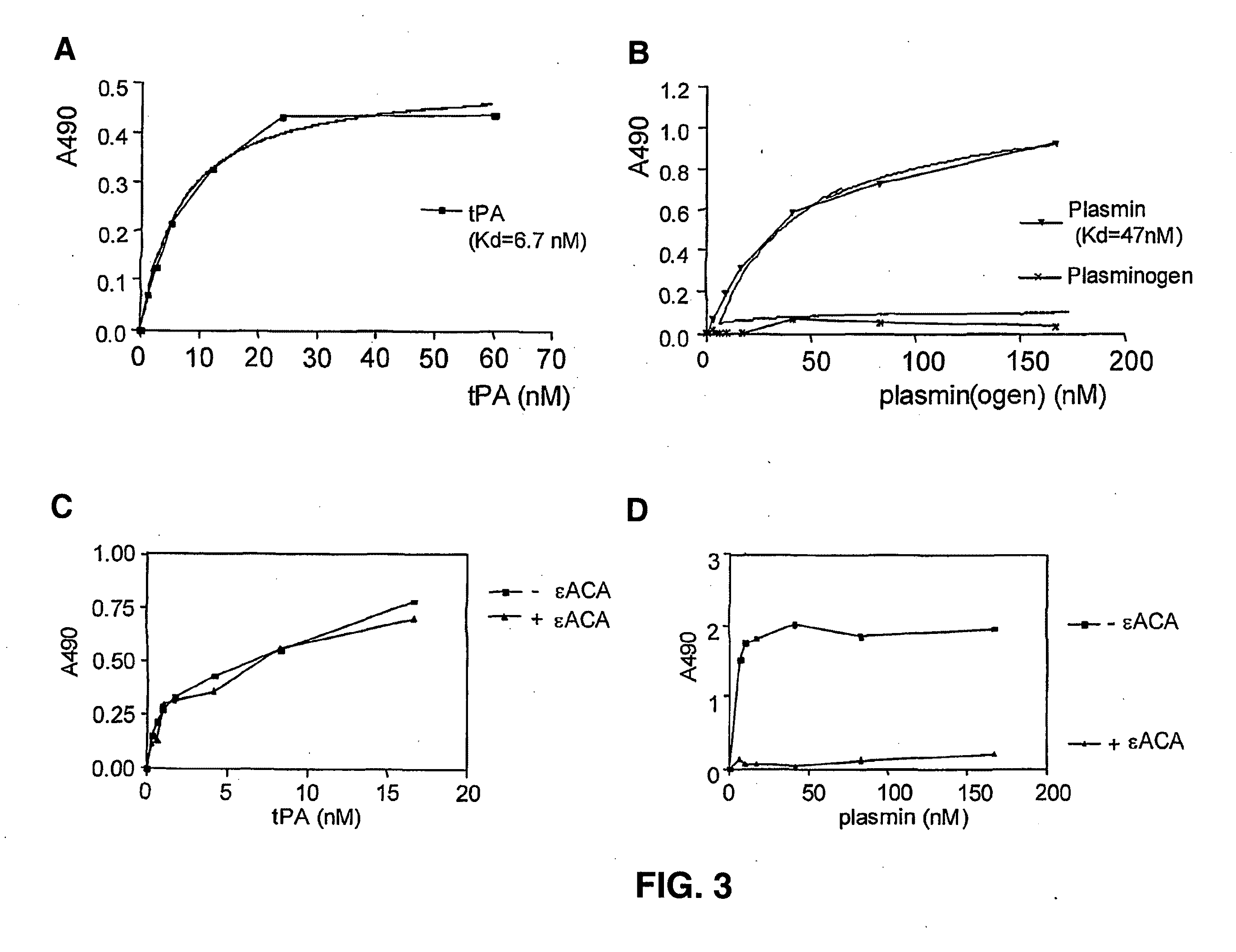Cross-Beta Structure Comprising Amyloid Binding Proteins and Methods for Detection of the Cross-Beta Structure, for Modulating Cross-Beta Structures Fibril Formation and for Modulating Cross-Beta Structure-Mediated Toxicity and Method for Interfering With Blood Coagulation
a cross-beta and protein technology, applied in the field of biological, molecular biology, cross-beta structure, can solve the problems of unknown why and how all these proteins are made, and achieve the effect of increasing local cytotoxicity and/or fibrinolysis
- Summary
- Abstract
- Description
- Claims
- Application Information
AI Technical Summary
Benefits of technology
Problems solved by technology
Method used
Image
Examples
example 1
Cross-β Structure is Present in Fibrin and in Synthetic Peptides Derived from Fibrin
[0234]It is demonstrated that a fibrin clot stains with Congo red (not shown) and exhibits Thioflavin T fluorescence (FIG. 2, Panel A), indicative of the presence of amyloid structure in a fibrin clot. Using Congo red staining (not shown), circular dichroism measurements and X-ray diffraction analysis, it is shown that synthetic peptides derived from the sequence of fibrin adopt cross-β structure (FIG. 2, Panels B, C). These peptides possess tPA-binding and tPA-activating properties. The presence of cross-β structure in these peptides was found to correlate with the ability to stimulate tPA-mediated plasminogen activation (FIG. 2, Panel D).
[0235]In conclusion, these data provide evidence for physiological occurrence / relevance for formation of cross-β structure and the role of this structural element in binding of tPA to fibrin.
example 2
Aβ Contains Cross-β Structure, Binds Plasmin(Ogen) and tPA, Stimulates Plasminogen Activation, Induces Matrix Degradation and Induces Cell Detachment that is Aggravated by Plasminogen and Inhibited by CpB
[0236]To test whether tPA, plasminogen and plasmin bind Aβ, solid-phase binding assays were performed. Aβ was coated onto plastic 96-well plates and binding of the peptide to either plasmin(ogen) or to tPA was assessed by overlaying the coated peptide with increasing concentrations of either tPA, plasminogen or plasmin. Binding was assessed using specific antibodies to either plasmin(ogen) or to tPA by performing ELISA. FIG. 3, Panel A, shows that tPA binds to Aβ with a Kd of about 7 nM, similar to the Kd of tPA binding to fibrin. In contrast, no detectable binding of plasminogen to Aβ was found (FIG. 3, Panel B). However, activated plasminogen (plasmin) does bind to Aβ, and does so with a Kd of 47 nM. The fact that (active) plasmin, but not (inactive) plasminogen, binds to Aβ, sugg...
example 3
Endostatin can Form Amyloid Fibrils Comprising Cross-β Structure
[0239]Using Congo red staining (not shown), X-ray diffraction analysis and TEM, the presence of cross-β structure in aggregated endostatin from Escherichia coli, as well as from Pichia pastoris, and the ability of endostatin to form amyloid fibrils is demonstrated (FIG. 6, Panels A and B). Bacterial endostatin produced reflection lines at 4.7 Å (hydrogen-bond distance), as well as at 10-11 Å (inter-sheet distance). The reflection lines show maximal intensities at opposite diffraction angles. The fiber axis with its 4.7 Å hydrogen bond repeat distance is oriented along the vertical capillary axis. This implies that inter-sheet distance of 10-11 Å is perpendicular to these hydrogen bonds. This is consistent with the protein being a cross-β sheet conformation with a cross-β structure. Intramolecular sheets in a globular protein cannot cause a diffraction pattern that is ordered in this way. From the amount of background sc...
PUM
| Property | Measurement | Unit |
|---|---|---|
| molecular mass | aaaaa | aaaaa |
| concentration | aaaaa | aaaaa |
| concentration | aaaaa | aaaaa |
Abstract
Description
Claims
Application Information
 Login to View More
Login to View More - R&D
- Intellectual Property
- Life Sciences
- Materials
- Tech Scout
- Unparalleled Data Quality
- Higher Quality Content
- 60% Fewer Hallucinations
Browse by: Latest US Patents, China's latest patents, Technical Efficacy Thesaurus, Application Domain, Technology Topic, Popular Technical Reports.
© 2025 PatSnap. All rights reserved.Legal|Privacy policy|Modern Slavery Act Transparency Statement|Sitemap|About US| Contact US: help@patsnap.com



